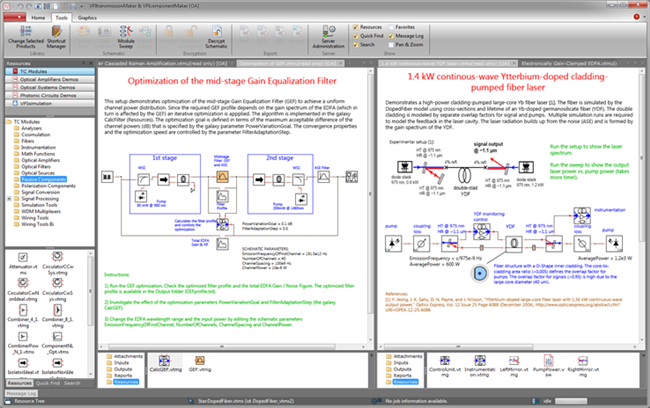VPIcomponentMaker™ Fiber Optics is an R&D tool for modeling, optimization, and design of fiber-based optical devices such as doped fiber, Raman and parametric amplifiers, continuous wave and pulsed optical fiber sources, optical signal processing for telecommunication, high-power and ultrafast applications.

The signal and noise models based on full-wave and parameterized representations are ideally suited for efficient analysis. The stationary and dynamic Er-,Yb-,Tm- and co-doped fiber and waveguide models simulate signal amplification, noise generation, and higher-order limiting effects in configurations with core- or cladding pumping at single or multiple wavelengths. The undoped fiber model simulates linear and nonlinear optical effects due to chromatic dispersion and PMD, Kerr nonlinearity, Raman, Brillouin and Rayleigh scattering.
Based on elementary building blocks, simple and sophisticated amplifier and laser topologies including active and passive components, signal monitors, control elements and feedback loops can be defined by the user. The general optimization capabilities of the design environment can be combined with specialized heuristic and deterministic algorithms to find, for instance, optimal wavelengths and powers of multiple Raman pumps to ensure a user-defined gain profile within acceptable tolerances. Virtual instrumentation provides versatile means to characterize the designed equipment with respect to the signal gain, noise level and power efficiency within wide range of operating conditions, which can be followed by conversion of the amplifier design to a rapid black box model.